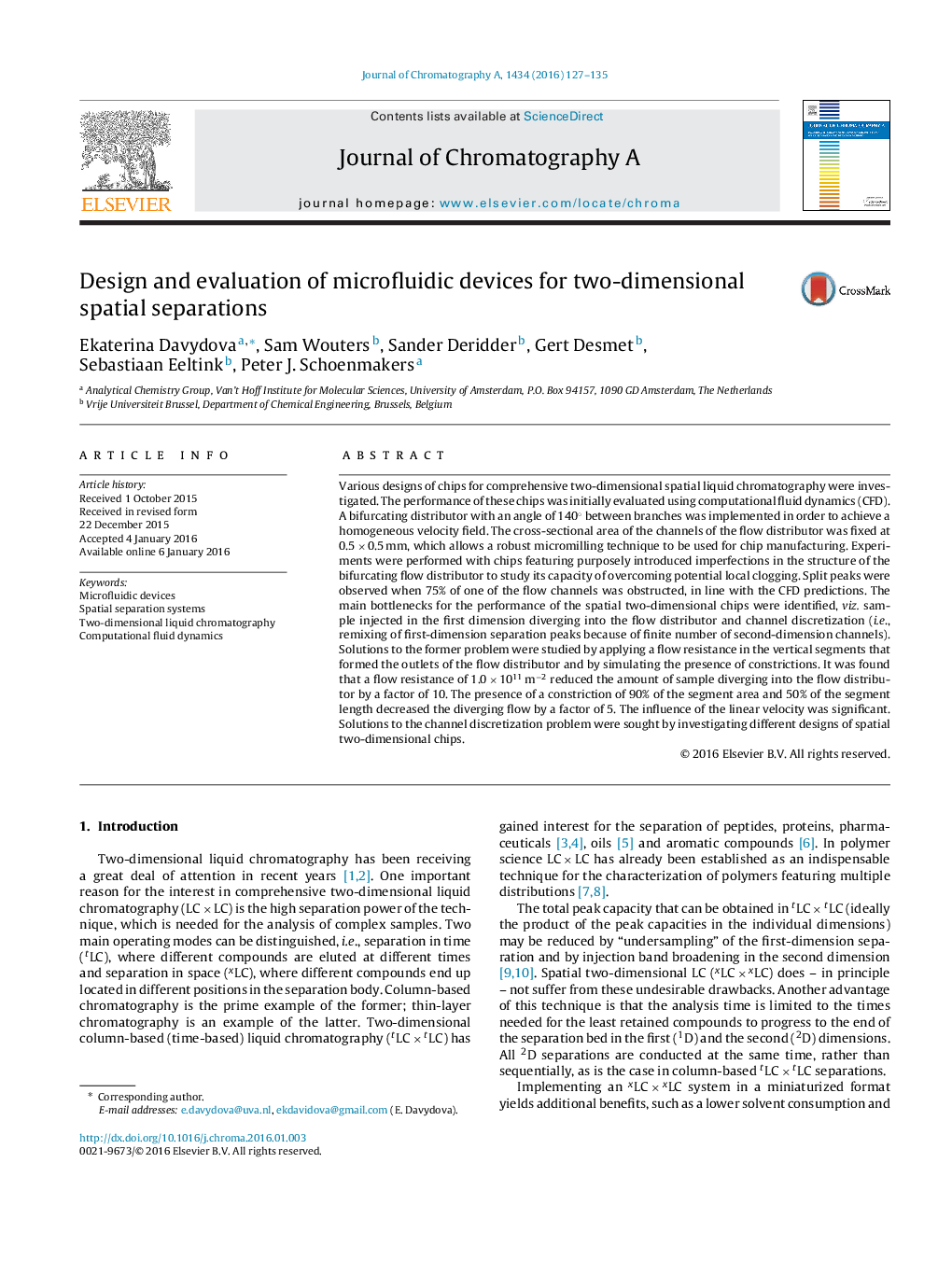| Article ID | Journal | Published Year | Pages | File Type |
|---|---|---|---|---|
| 1198978 | Journal of Chromatography A | 2016 | 9 Pages |
•Various chip designs for spatial two-dimensional liquid chromatography were studied.•Computational fluid dynamics (CFD) calculations were performed.•Constrictions were created and flow resistance was applied to the flow distributor.•Chips with constrictions were studied experimentally.•Sample confinement in the 1D channel was improved.
Various designs of chips for comprehensive two-dimensional spatial liquid chromatography were investigated. The performance of these chips was initially evaluated using computational fluid dynamics (CFD). A bifurcating distributor with an angle of 140° between branches was implemented in order to achieve a homogeneous velocity field. The cross-sectional area of the channels of the flow distributor was fixed at 0.5 × 0.5 mm, which allows a robust micromilling technique to be used for chip manufacturing. Experiments were performed with chips featuring purposely introduced imperfections in the structure of the bifurcating flow distributor to study its capacity of overcoming potential local clogging. Split peaks were observed when 75% of one of the flow channels was obstructed, in line with the CFD predictions. The main bottlenecks for the performance of the spatial two-dimensional chips were identified, viz. sample injected in the first dimension diverging into the flow distributor and channel discretization (i.e., remixing of first-dimension separation peaks because of finite number of second-dimension channels). Solutions to the former problem were studied by applying a flow resistance in the vertical segments that formed the outlets of the flow distributor and by simulating the presence of constrictions. It was found that a flow resistance of 1.0 × 1011 m−2 reduced the amount of sample diverging into the flow distributor by a factor of 10. The presence of a constriction of 90% of the segment area and 50% of the segment length decreased the diverging flow by a factor of 5. The influence of the linear velocity was significant. Solutions to the channel discretization problem were sought by investigating different designs of spatial two-dimensional chips.
